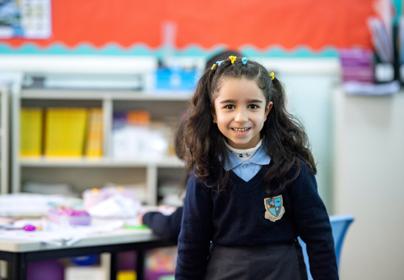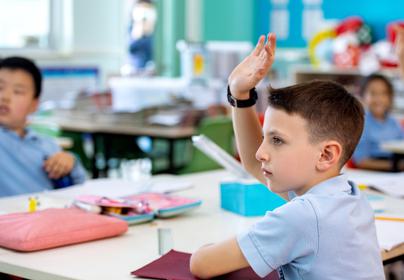In our ever-evolving educational landscape, the approach we take in the classroom can significantly impact how students engage with Science. At Britannica we believe it is vitally important to cultivate a student-centered approach in teaching Science, where learners are active participants in their education through hands-on experiments and first-hand observations. Traditional learning theories often emphasise a teacher-led model, where information is delivered in a lecture format. While this approach can provide foundational knowledge, it often leaves students as passive recipients of information. In contrast, current educational research supports a more dynamic, student-centered approach, which fosters engagement and deepens understanding.
In our ever-evolving educational landscape, the approach we take in the classroom can significantly impact how students engage with Science. At Britannica we believe it is vitally important to cultivate a student-centered approach in teaching Science, where learners are active participants in their education through hands-on experiments and first-hand observations. Traditional learning theories often emphasise a teacher-led model, where information is delivered in a lecture format. While this approach can provide foundational knowledge, it often leaves students as passive recipients of information. In contrast, current educational research supports a more dynamic, student-centered approach, which fosters engagement and deepens understanding.
Year 6 and Year 8 have been exploring the world of light through hands-on experiments that cover concepts like reflection and refraction using mirrors and prisms. They’ve learned about Isaac Newton’s contributions to the visible spectrum and its applications in optics and engineering. Additionally, students examined the functions of convex and concave lenses, relating these principles to everyday technologies like eyeglasses and cameras, while discussions about the human eye foster an appreciation for nature's intricate designs.
Year 7 has focused on investigating forces, exploring gravitational and frictional forces through practical experiments. As they study the solar system, students are learning how science informs our understanding of global challenges, including space exploration. Meanwhile, Year 9 has centered on energy, delving into various types and calculating gravitational potential and kinetic energy. Recently, they have progressed to electricity, experimenting with current and potential difference in series and parallel circuits, comparing their results with simulations. This hands-on approach enhances critical thinking and underscores the relevance of science in everyday life.
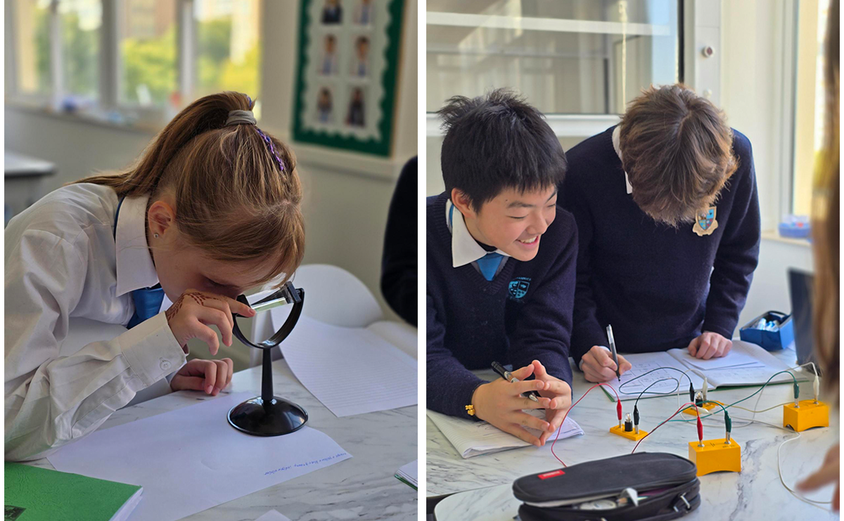
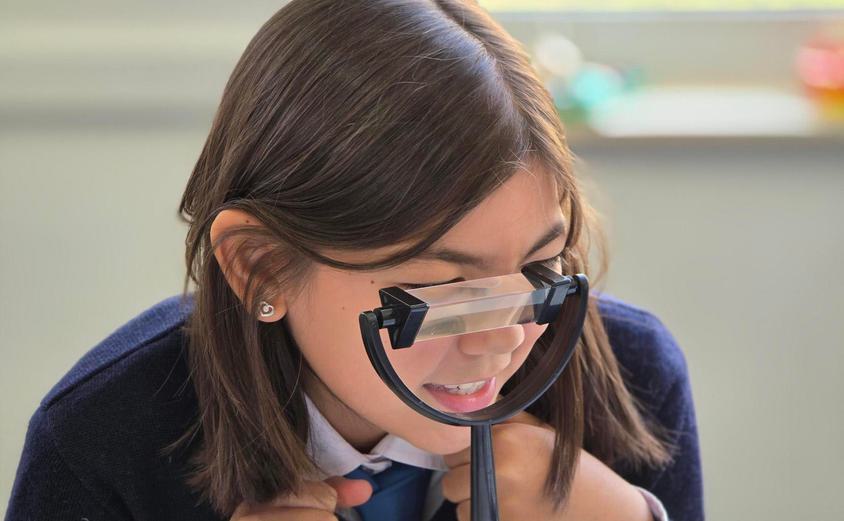
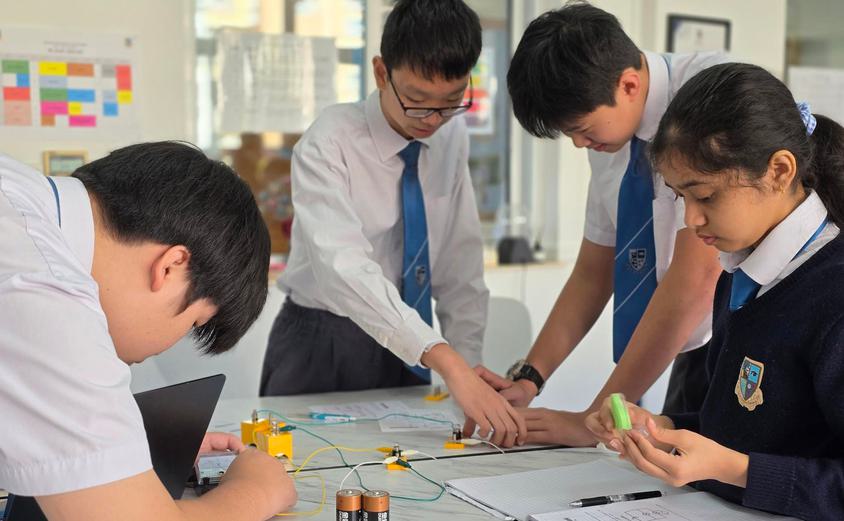
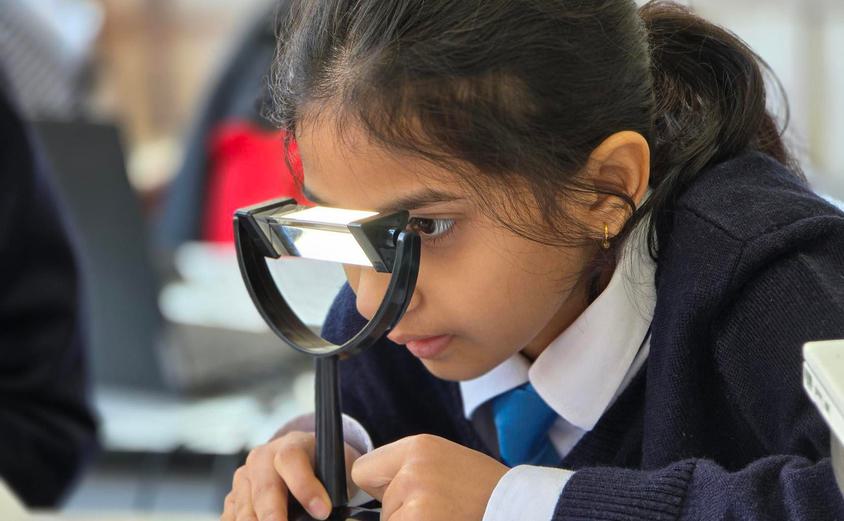
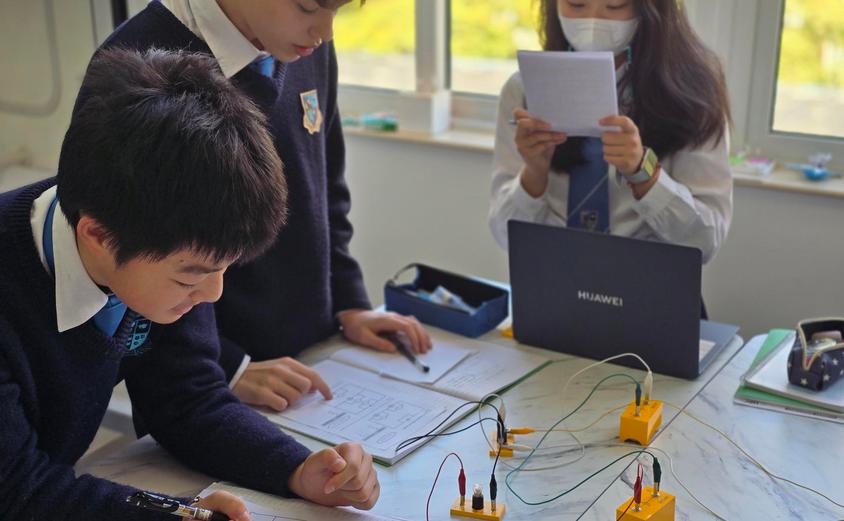




Year 7 has focused on investigating forces, exploring gravitational and frictional forces through practical experiments. As they study the solar system, students are learning how science informs our understanding of global challenges, including space exploration. Meanwhile, Year 9 has centered on energy, delving into various types and calculating gravitational potential and kinetic energy. Recently, they have progressed to electricity, experimenting with current and potential difference in series and parallel circuits, comparing their results with simulations. This hands-on approach enhances critical thinking and underscores the relevance of science in everyday life.
When they conduct experiments, they become scientists in their own right, testing hypotheses, collecting data, and drawing conclusions based on their findings. This experiential learning fosters curiosity and encourages students to ask questions, driving their desire to learn more. At Britannica, our student-centered learning encourages collaboration and communication among peers. By working in groups, students share ideas, challenge each other’s thinking, and learn from diverse perspectives.
When they conduct experiments, they become scientists in their own right, testing hypotheses, collecting data, and drawing conclusions based on their findings. This experiential learning fosters curiosity and encourages students to ask questions, driving their desire to learn more. At Britannica, our student-centered learning encourages collaboration and communication among peers. By working in groups, students share ideas, challenge each other’s thinking, and learn from diverse perspectives. This collaborative aspect mirrors the way scientists work in the field, fostering teamwork and enhancing social skills - qualities that are invaluable in any career. Moreover, by using a student-centered approach, we also help students see the relevance of science in their everyday lives. When they understand how scientific principles apply to real-world scenarios, like how engineers design safer vehicles or how environmental scientists study ecosystems, they are more likely to appreciate the importance of their learning.



